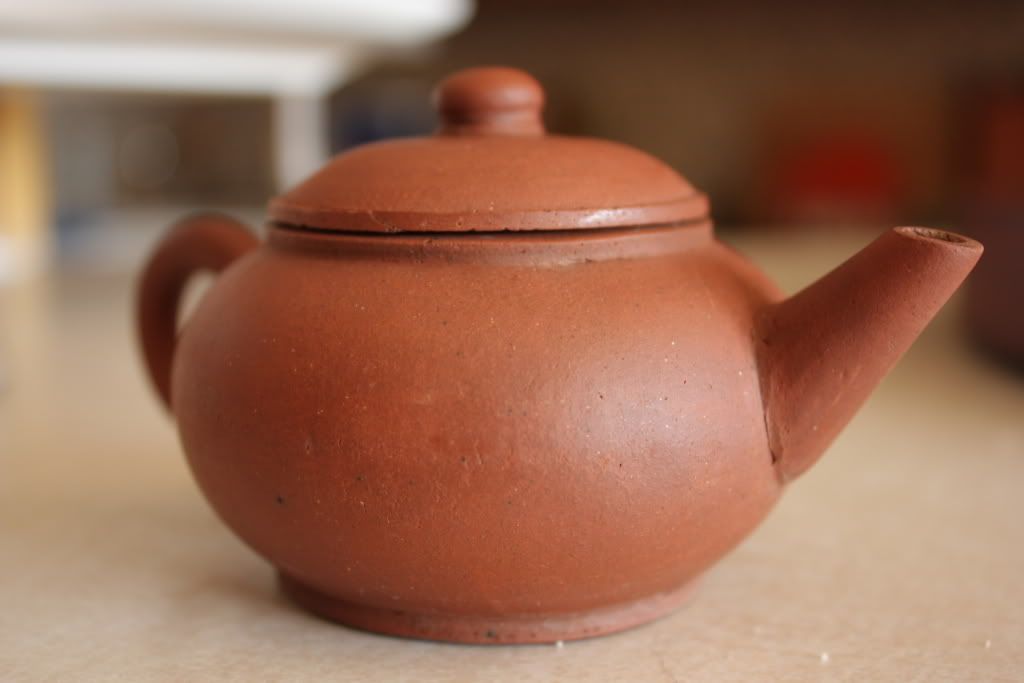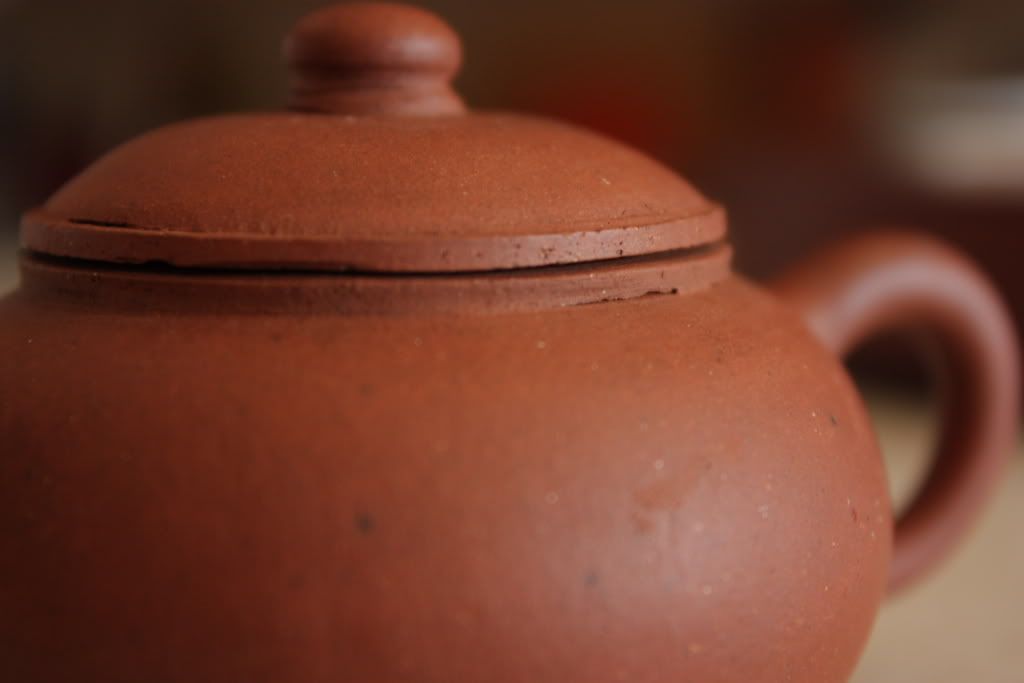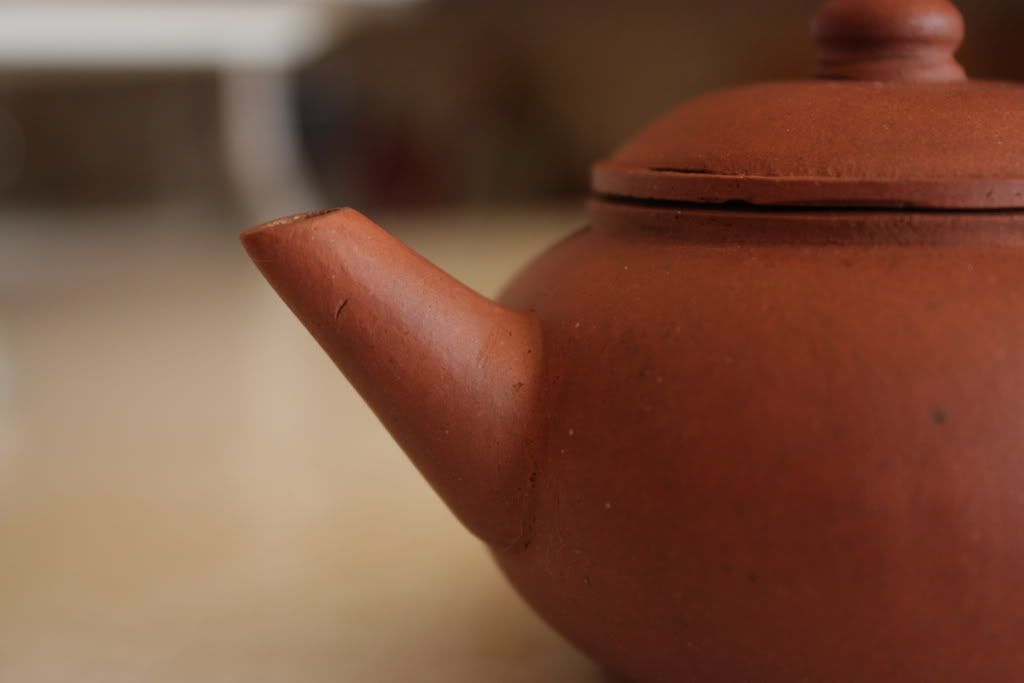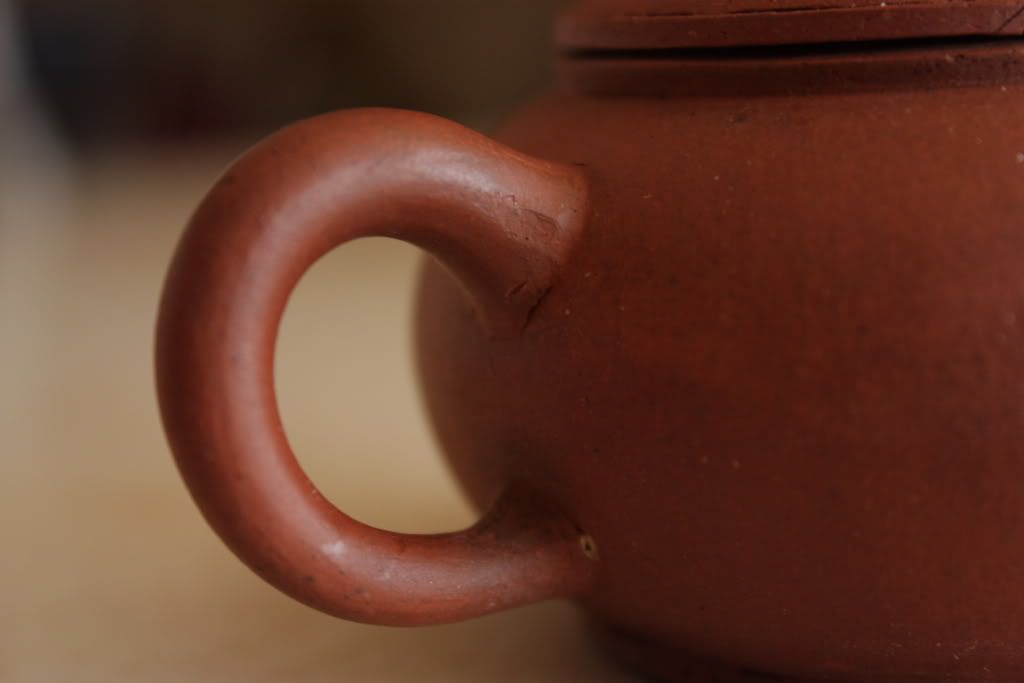I don’t know why I like this pot, but I do.

It is very plain. It isn’t particularly well made — the lid is slightly uneven on the body. It looks muddy — as if the clay is still wet and is about to dissolve. It is very light, and obviously porous. It doesn’t pour particularly well.

It does, however, make nice young puerh.

I tried it against the other pot that I use (or rather, used to use). Something about this pot makes the tea softer and nicer, which, for making young puerh, is a fairly important quality.

Especially when you’re trying to cut down on the nasty surprises that bad samples can give you.

You can see the places where the craftsman who made this pot has made a mark — a little push on the clay here or a little nudge there. The piece is unsigned, but perhaps this serves as a good signature.

 RSS - Posts
RSS - Posts
7 responses so far ↓
coraxjk // March 11, 2009 at 2:49 am |
there’s something really touching about this — your affection for a pot that maybe couldn’t hold its own in a museum against more distinguished objets d’art, but that [against all odds] makes really good tea. i love that. [wabi-sabi? or just plain inner beauty?]
Anonymous // March 11, 2009 at 10:48 am |
It’s probably the under-fired ness of it.
Clay is like… a mixture of stuff, with oxide’s and carbonates stuck to it.
When you fire it, there’s something called loss on ignition.
What happens is that the heat sort of breaks off that oxide/carbonate
and it kinda fuses the particles together. It’s why clay can only be
fired once, since it is a chemical change. When those bits are burnt
off, the piece shrinks because there’s less stuff, and the stuff left
sort of contracts to stick to itself. That closes the pores of the clay.
So… in an underfired clay, the pores are more open.
Also, that clay looks like it has alot of iron in it, which IMO softens
tea. Since it’s also porous, you get more interaction with the iron than
if it was completely vitrified. That’s just a guess.
On the otherhand, you might just have a warmspot for an underdog. 🙂
rainrider101 // March 11, 2009 at 7:27 pm |
Hi – Where do you get your tea pots?
Doug from Seattle
vlad_l // March 11, 2009 at 10:59 pm |
Very cute pot!
-vl.
MarshalN // March 12, 2009 at 11:47 am |
Corax: I don’t know what it is, but this pot has some sort of attraction for me. It’s very plain, and maybe that’s why I like it.
Walt: Thanks for your explanations :). You can still see evidence of the kiln on this one…
Doug: I don’t buy online almost as a rule, although sometimes I will do so from random sources. Most of my pots I got in person.
VL: Thanks 🙂
MANDARINstea // March 12, 2009 at 1:16 pm |
What a beauty! Have a Korean wabi feel to it…. understated perhaps? Have you try doing traditional Kung Fu with high roasted aged oolong? Might get the sour out of an old tea too : ) Thanks for showing your pots again. Love these kind of post -T
Anonymous // March 12, 2009 at 2:38 pm |
BTW, I really dig that pot.
It’s a great learning tool as far as hand building construction goes since every flaw shows just a bit more into how it was made.
For instance, the split between the rims of the lid and the pot show that they were cut from sheets and then applied to the body, and dome of the lid. Those two disks were probably cut at the same time, yet the rim on the lid is slightly smaller and the gap between the lid and the body is caused by a cone, which means one or the other dried faster than the other. The knob on the lid shows how it was added separately, and it’s diagonal press line where it connects to the lid shows that it was made by rolling a clay ball in a split piece of bamboo. The handle shows that it was attached to the body while it was still soft by the flare it makes at both the top and bottom, and where it gets just slightly thinner below the flare going toward the middle of the handle where the maker had to press it into the body. The spout is also interesting, since the line that the tip is cut at is not typical of classic shui pin, and the wall of the spout is thinner at the top than the bottom. The inside and bottom would also probably tell tales about how it was made. I would guess that this is an apprentice made pot because of the tells, as well as the courser clay. It has all sorts of signs of someone learning good technique but not yet perfected.
As a hobby potter I love looking at this kind of thing. It tells so much if you know what you’re looking at.